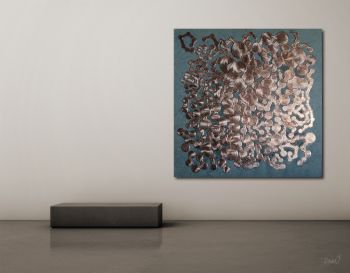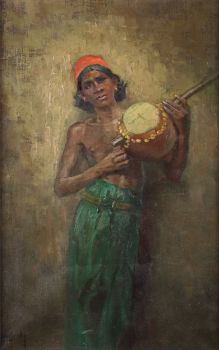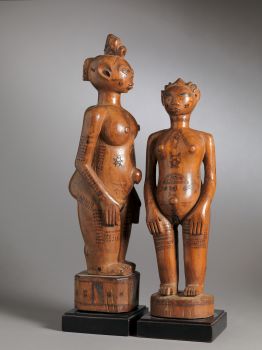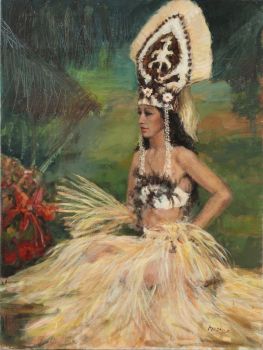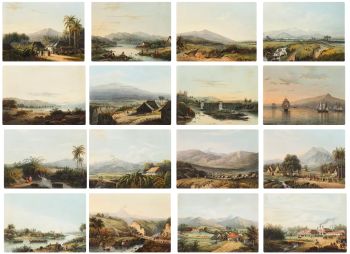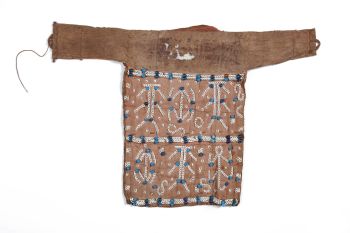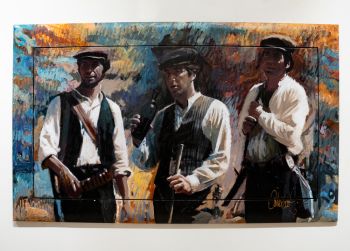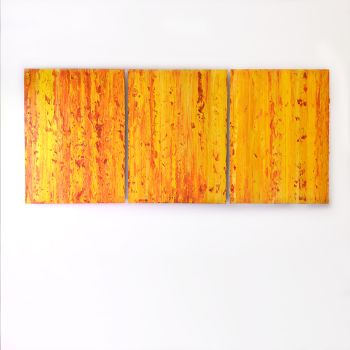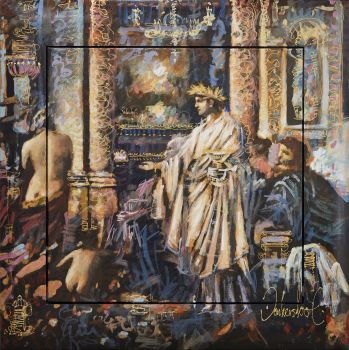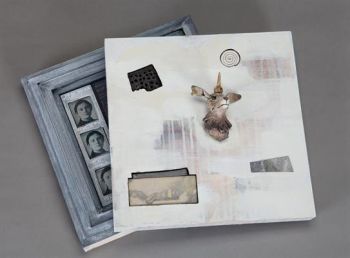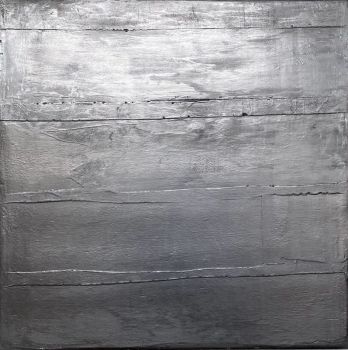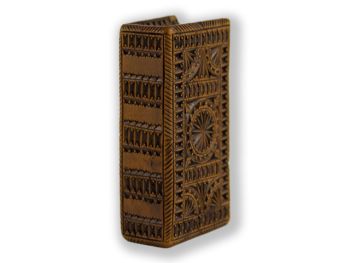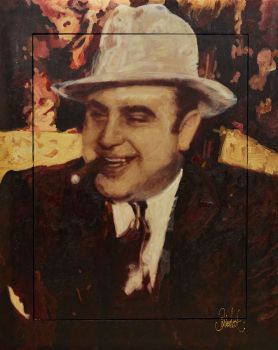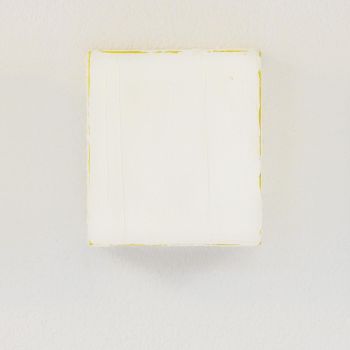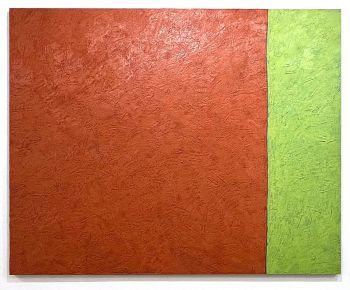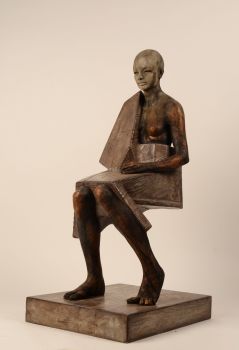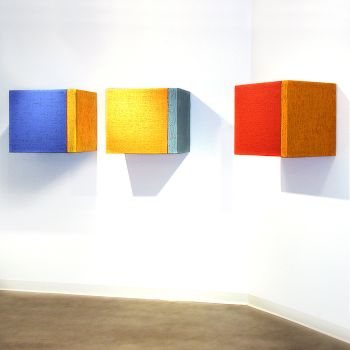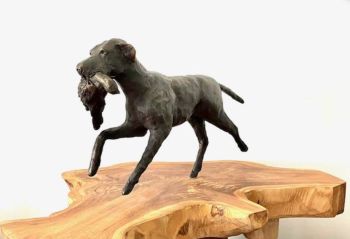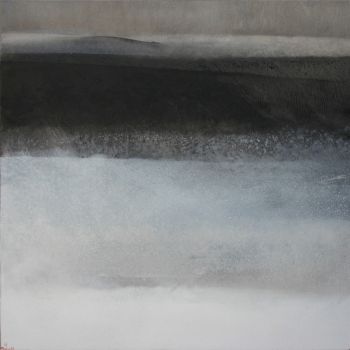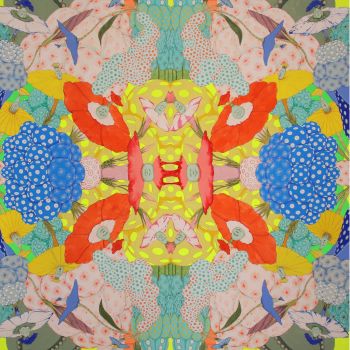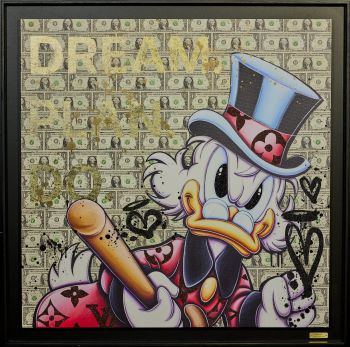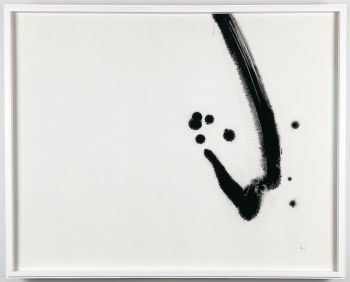A pair of Javanese wooden polychrome painted wall panels, c. 1900 1900
Onbekende Kunstenaar
Hout
71 ⨯ 49 cm
ConditionGood
€ 1.200
Menken Works of Art
- Over kunstwerkAn exquisite pair of carved wooden polychrome relief hand-painted panels in original frames.
Java (Indonesia), late 19th / early 20th century.
The figure on the left panel of the first picture representing Brajadenta. With text at the bottom: 'R.Soeratinin Aro'.
The figure on the right panel of the first picture representing wayang figure Bratasena, the young Bima. With text at the bottom: 'R.(=Raden) Brontoseno. Soerabaja', followed by a date.
A fine example of Javanese folk art
In some parts of Java, wooden plaques like these were placed on the wall around the entrance of the house, to protect the residents from evil spirits.
Dimensions with frames:
Length 71 cm, width 49,5 cm.
Dimensions without frames:
Length 56 cm, width 34,5 cm
Condition:
In a good old condition with some wear - see pictures.
Provenance:
From the collection of Dr. Hedi Hinzler, Leiden, the Netherlands.
Ref:
Soebadio, Haryati - Pusaka Indonesische kunstschatten, p. 173.
Worldwide registered and insured shipping.
Take a look at our other listings for more Asian art, antiques, design, etc.
Inv. No: A00281
-
The story behind the two Wayang figures:
Bratasena:
This puppet represents the character of the Bima also known as Bratasena (Bhima) in the Hindu epic Mahabharata which is performed in the Javanese wayang kulit, or leather shadow puppet theatre tradition. Bima is one of the five Pandava brothers and is recognised by his large thumbnail, that he used to attack his enemies.
Brajadenta:
Brajadenta is the third son of Prabu Arimbaka (Kala Tremboko), the giant king of the Pringgandani state with Dewi Hadimba.
Brajadenta has a stubborn character, wants to win alone, is brave and wants to always follow his heart. He was very powerful, because of that his older brother, Dewi Arimbi, appointed him as the deputy king to hold the reigns of government for the Pringgandani state as long as Dewi Arimbi accompanied her husband Werkudara to live in Jadipati.
At the end of his story, it is told that because he disagreed with the appointment of Gatotkaca, the son of Dewi Arimbi and Werkudara as king of Pringgandani, Brajadenta, assisted by his three younger brothers, Brajamusti, Brajalamatan and Brajawikalpa, rebelled because he wanted to absolutely control the country of Pringgandani.
Gatotkaca crushed his rebellion with the deaths of Brajalamatan and Brajawikalpa. Brajadenta and Brajamusti managed to escape and take refuge in their nephew Prabu Arimbaji, the son of the late Prabu Arimba who had become king in the country of Gowasiluman in the Tunggarana forest. With the help of Bathari Durga, Brajadenta entered Pringgandini's country again to kill Gatotkaca.
His efforts again failed. Brajadenta finally died in the battle against Gatotkaca.
His spirit incarnated into an enchantment / magic and entered / merged into Gatotkaca's teeth. Since then Gatotkaca has supernatural powers; whoever gets bitten by it will surely perish. - Over kunstenaar
Het kan voorkomen dat een kunstenaar of maker onbekend is.
Voor sommige werken is het niet te bepalen door wie het gemaakt is of dat het is gemaakt door (een groep) ambachtslieden. Voorbeelden zijn beelden uit de Oudheid, meubels, spiegels of handtekeningen die vaak niet duidelijk of leesbaar zijn. Maar ook sommige werken zijn helemaal niet gesigneerd.
Ook kunt u de volgende beschrijving vinden:
•"Toegeschreven aan …." waarschijnlijk een werk van de kunstenaar maar niet zeker of gedeeltelijk
•“Atelier van ….” of werkplaats van” een werk uitgevoerd in het atelier of atelier van de kunstenaar, eventueel onder zijn toezicht
•“Cirkel van ….” een werk uit de periode van de kunstenaar die zijn invloed laat zien, nauw verbonden met de kunstenaar maar niet noodzakelijkerwijs zijn leerling
•“Stijl van ….” of “Volger van ….” een werk uitgevoerd in de stijl van de kunstenaar, maar niet noodzakelijk door een leerling; kan eigentijds of bijna eigentijds zijn
•“Wijze van ….” een werk in de stijl van de kunstenaar maar van latere datum
•"Na …." een kopie (van welke datum dan ook) van een werk van de kunstenaar
•“Getekend…”, “Gedateerd….” of “Ingeschreven” dan is het werk gesigneerd/ gedateerd/ ingeschreven door de kunstenaar. De toevoeging van een vraagteken duidt op een element van twijfel
•"Met handtekening ...", "Met datum ...", "Met opschrift..." of “Draagt signatuur/datum/opschrift” dan is de handtekening/datum/opschrift toegevoegd door iemand anders dan de kunstenaar
Bent u geïnteresseerd om dit kunstwerk te kopen?
Artwork details
Related artworks
Onbekende Kunstenaar
Gevleugelde Venetiaanse Beker1624 - 1626
Prijs op aanvraagPeter Korf de Gidts - Antiquairs
1 - 4 / 12HUGO VILFRED VON PEDERSEN
Gadesanger fra Singapore (Musician from Singapore)1870 - 1959
Prijs op aanvraagZebregs & Röell - Fine Art - Antiques
1 - 4 / 13Onbekende Kunstenaar
MATERNITY FIGURE, FANG-MABEA, CAMEROON.PROVENANCE R.CAILLOIS-P.RATTON.1920 - 1930
Prijs op aanvraagSpectandum Gallery
Onbekende Kunstenaar
Couple Wooden Ancestors Sculptures with Scarifications, Zela People, DRC. 1920 - 1930
Prijs op aanvraagSpectandum Gallery
1 - 3 / 3Theo Meier
Een Balinese vrouw met offergaven1936
Prijs op aanvraagZebregs & Röell - Fine Art - Antiques
Abraham Salm
Twenty-four chromolithographs of Java after A. Salm”1801 - 1876
Prijs op aanvraagZebregs & Röell - Fine Art - Antiques
1 - 4 / 12- 1 - 4 / 24
Onbekende Kunstenaar
A white jade ‘Lotus Seedpod and Bug’ carving, Qing dynasty, 18th century18th century
Prijs op aanvraagMenken Works of Art
Onbekende Kunstenaar
Chinese gilt bronze censer, Xuande mark, 18th century, Qing dynasty18th century
Prijs op aanvraagMenken Works of Art
1 - 4 / 11





















